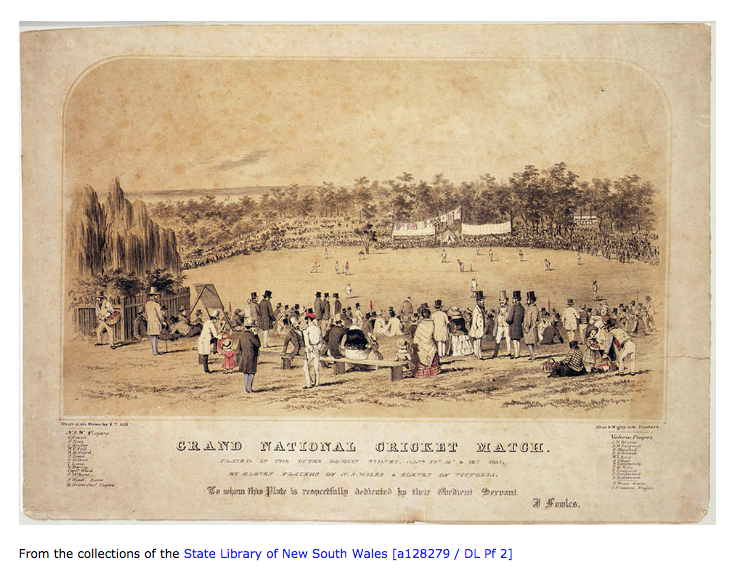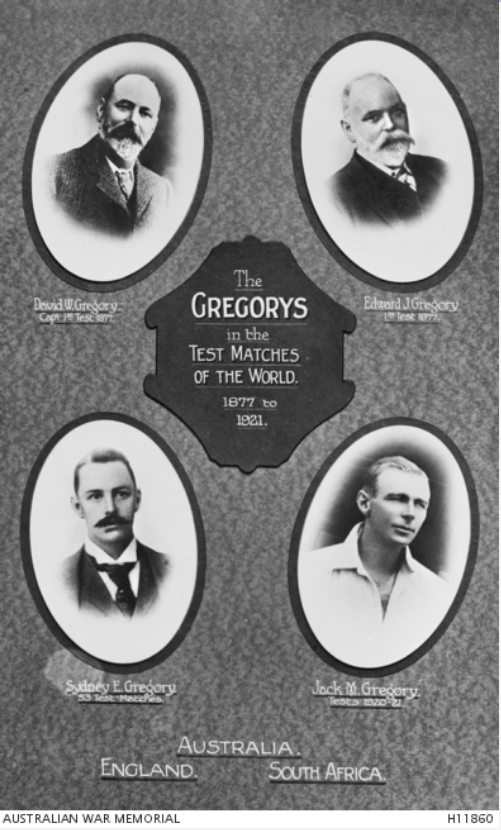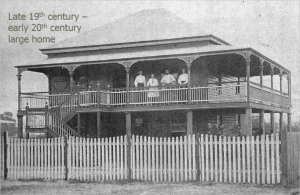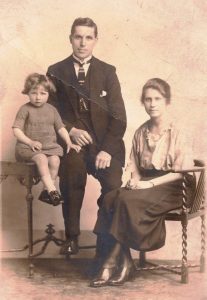With cricket in the forefront of news at the moment with the England Australia Ashes Tests in progress, I thought it was timely to share some of my family history.
On 15 September 1813, my 4 times great grandmother, Henrietta Gregory was sentenced to 14 years transportation for being found in possession of forged bank notes. Her occupation was servant, aged 39 and arrived Sydney on “Broxbornebury” 28 July 1814 with her 4 children. One of those children would go on to father an Australian cricket dynasty.

After Henrietta’s death in 1819 the 3 boys entered the Male Orphan School that bordered the Tank Stream in Sydney. It’s believed their sister went into domestic service.
Edward, the eldest of the 3 brothers, became an apprentice shoemaker and excelled at his work. He was awarded a Silver Medal for his efforts. However, he was already showing signs of leadership when he co-wrote a letter of complaint to the Management Committee complaining that food was withheld for trivial misdemeanors.
Following this petition and the questioning of witnesses, the Committee took steps to ensure that such abuses did not recur. These measures included getting a doctor to set out a basic diet for the boys, and ruling that staff not set the boys any jobs other than their Institution chores and apprentice tasks.
In the 1828 Census, Edward & his brother George were Shoemakers in Castlereagh St, Sydney. Edward married Mary Ann Smith at Scots Presbyterian Church, Sydney in 1835 and they had 8 sons (one son died in infancy) and 5 daughters over the next 28 years.
No cricketing family in Australia holds a prouder record than the Gregorys – Edward Gregory first played the game in Hyde Park in 1826.

He had seven sons — Edward, Walter, David, Charles, Fred, Albert, and Arthur — all of whom played cricket, and several of whom represented their State. But the greatest of the seven was David, who captained the first Australian XI to defeat an All-England team in this country in1877, and who also captained the first white Australian team to tour England in 1880. (Note: the first cricket team to tour England in 1868 was an Aboriginal team).
David was educated at the St James Model School and in 1861 joined the Auditor-General’s Department. In 1883 he became Inspector of Public Accounts and later Paymaster of the Treasury until his retirement in 1908. With his brothers Edward James and Charles Smith (1847-1935) he played a celebrated series of single wicket matches against Victorian players. He captained New South Wales and in March 1877 the combined New South Wales and Victorian side defeated the English team in what is known as the first Australia-England Test Match.
David captained the first Australian team to tour England and also America.

The younger Edward (b. 1839) became Curator of the Sydney Cricket Ground, which was laid out, under his supervision after his retirement from cricket in 1878. He married Ellen Mainwaring in 1861 and they had 3 sons and 5 daughters. One son, Sydney Edward (b. 1870) played for New South Wales then Australia against England and was in every touring side until 1912 when he was also captain.
Numerous articles have been written of David Gregory’s team building and leadership skills. His work ethic was tremendous and he instilled this into the whole team. This resulted in the Australian team’s winning 13 of their 17 matches on the English tour shocking the English side who had taken the “colonials” lightly.

A feature often mentioned in the press these days is the on field “sledging” between opposing teams. This could well have originated from an incident reported in the Sydney Morning Herald of Monday 10 February 1879 –
“The match, we regret to say was marked by the most disgraceful scene we ever remember to have witnessed on any cricket ground in the metropolis. Such a display of unbridled rowdyism, perpetrated as it was in the presence of his Excellency the Governor, Lady Robinson and party, and a large number of the prominent citizens of Sydney and directed against the English players who are at present our guests, will probably remain as a blot upon the colony for some years to come.”
The article went on to describe in great detail the decision by the English umpire, on appeal, to allow a run out of an Australian player which resulted in a near riot and some physical violence towards some of the English players. This resulted in one of the English professionals making use of “a grossly insulting remark to the crowd about their being nothing but “sons of convicts” and this no doubt had something to do with the frenzied excitement which arose all at once, and incited the crowd to acts of violence.”
Perhaps the English were aware that the grandmother of the Gregory brothers actually was transported to the colony as a convict.
As has often happened with the descendants of these convicts, the family went on to become fine Australian citizens and outstanding contributors to the community including a number of them serving in the AIF in the First World War earning decorations for bravery.

References:
Proceedings of the Old Bailey 15th September 1813, page 31
Grand national cricket match, played in the Outer Domain, Sydney, January 14th, 15th & 16th, 1857 State Library of New South Wales.
Australian cricketer, David Gregory, fielding. By Ane Trove – Photographs
Dave Gregory, Cricketer Trove – Newspapers
Postcard of portraits of four members of the Gregory family who played 69 cricket test matches for Australia … Australian War Memorial



